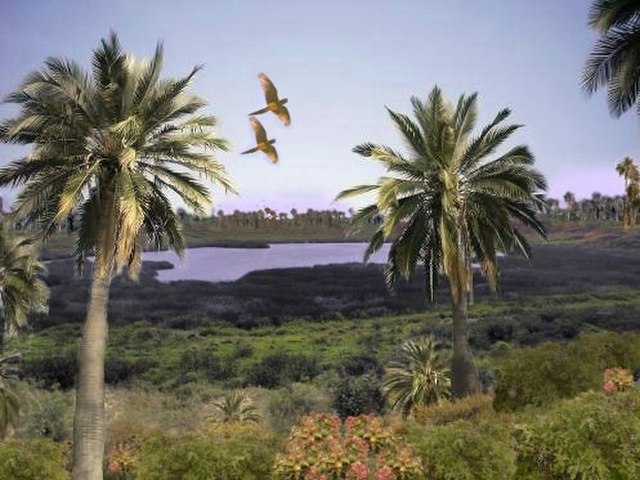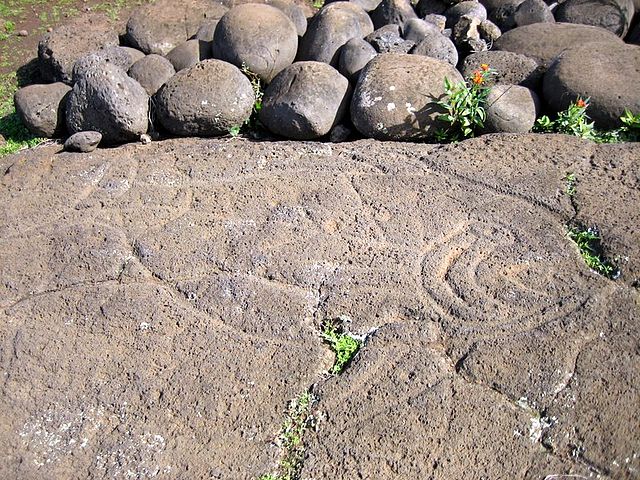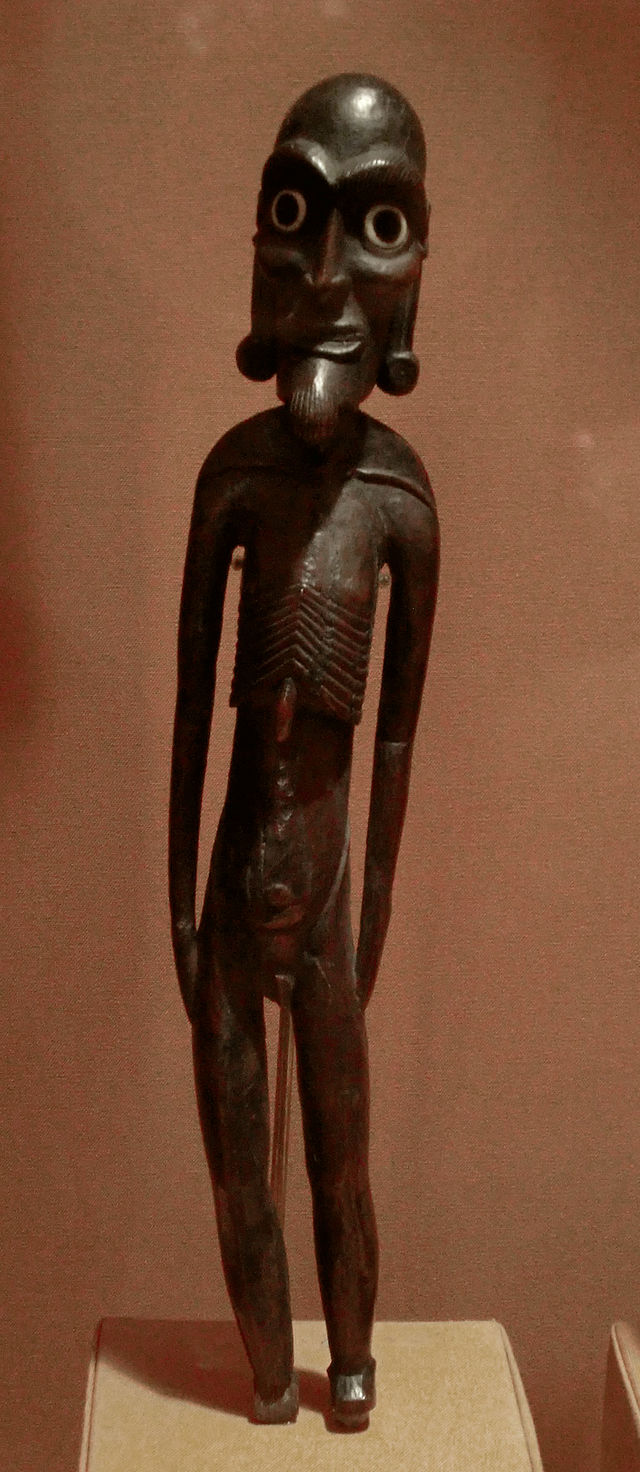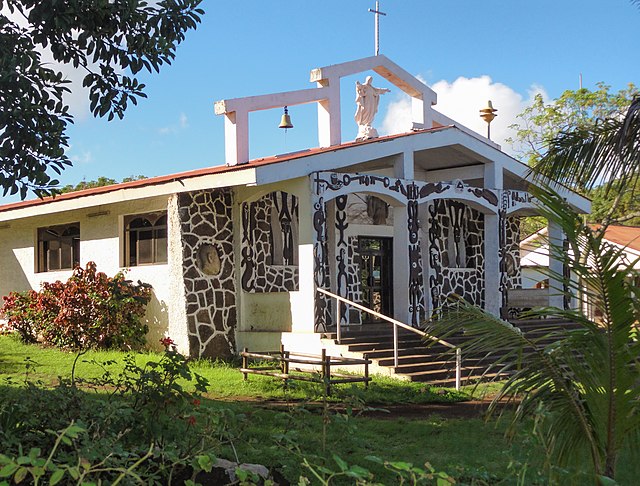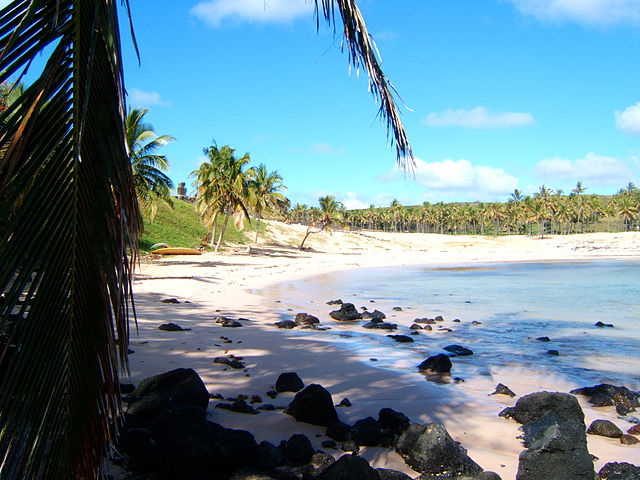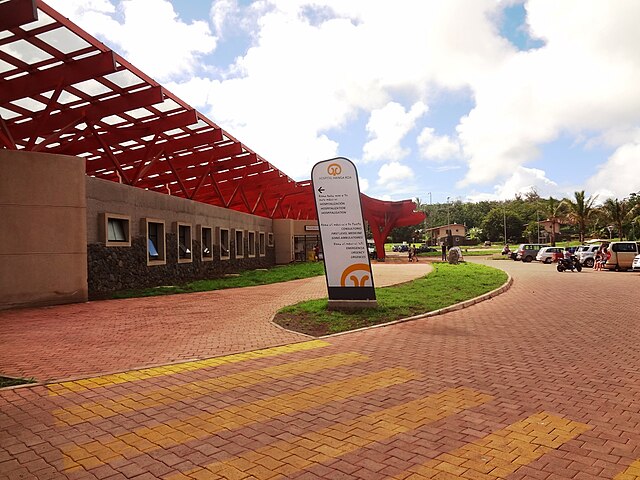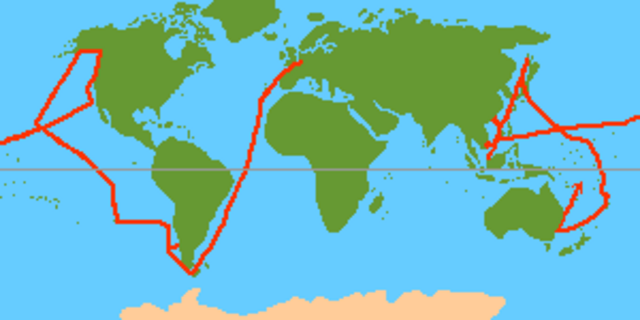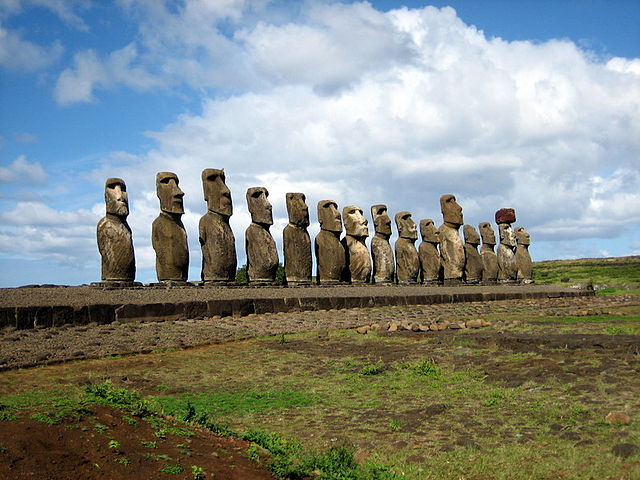Easter Island (Isla de Pascua)
Easter Island (Rapa Nui: Rapa Nui; Spanish: Isla de Pascua) is an island and special territory of Chile in the southeastern Pacific Ocean, at the southeasternmost point of the Polynesian Triangle in Oceania. The island is most famous for its nearly 1,000 extant monumental statues, called moai, which were created by the early Rapa Nui people. In 1995, UNESCO named Easter Island a World Heritage Site, with much of the island protected within Rapa Nui National Park.
Experts disagree on when the island's Polynesian inhabitants first reached the island. Some believe that they arrived around 800 CE, though a 2007 study found the time to be 1200 CE. The inhabitants created a thriving and industrious culture, as evidenced by the island's numerous enormous stone moai and other artifacts. However, land clearing for cultivation and the introduction of the Polynesian rat led to gradual deforestation. By the time of European arrival in 1722, the island's population was estimated to be 2,000 to 3,000. European diseases, Peruvian slave raiding expeditions in the 1860s, and emigration to other islands such as Tahiti further depleted the population, reducing it to a low of 111 native inhabitants in 1877.Chile annexed Easter Island in 1888. In 1966, the Rapa Nui were granted Chilean citizenship. In 2007 the island gained the constitutional status of "special territory" (Spanish: territorio especial). Administratively, it belongs to the Valparaíso Region, constituting a single commune of the Province Isla de Pascua. The 2017 Chilean census registered 7,750 people on the island, of whom 3,512 (45%) considered themselves Rapa Nui.Easter Island is one of the most remote inhabited islands in the world. The nearest inhabited land (around 50 residents in 2013) is Pitcairn Island, 2,075 kilometres (1,289 mi) away; the nearest town with a population over 500 is Rikitea, on the island of Mangareva, 2,606 km (1,619 mi) away; the nearest continental point lies in central Chile, 3,512 km (2,182 mi) away.
- 1 Etymology
-
2
History
- 2.1 Introduction
- 2.2 Rapa Nui settlement
- 2.3 European contact
- 2.4 19th century
- 2.5 20th century
- 2.6 21st century
- 2.7 Indigenous rights movement
- 3 Geography
- 4 Ecology
-
5
Culture
- 5.1 Mythology
-
5.2
Stone work
- 5.2.1 Statues
- 5.2.2 Stone platforms
- 5.2.3 Stone walls
- 5.2.4 Stone houses
- 5.2.5 Petroglyphs
- 5.2.6 Caves
- 5.2.7 Other stones
- 5.3 Rongorongo
- 5.4 Wood carving
-
5.5
21st-century culture
- 5.5.1 Sports
- 5.6 Tapati Festival
-
6
Demographics
- 6.1 2012 census
- 6.2 Demographic history
- 6.3 Languages
- 7 Administration and legal status
- 8 Notable people
- 9 Transportation
- 10 See also
- 11 References
- 12 Bibliography
- 13 Further reading
- 14 External links
Links
Images Gallery
-

-

-

-

-

-
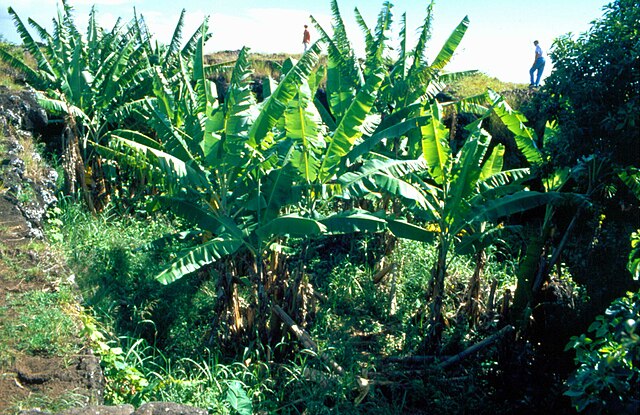
-

-

-

-
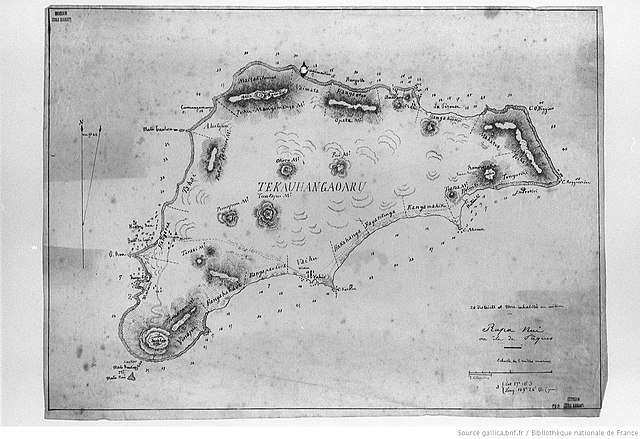
-

-

-
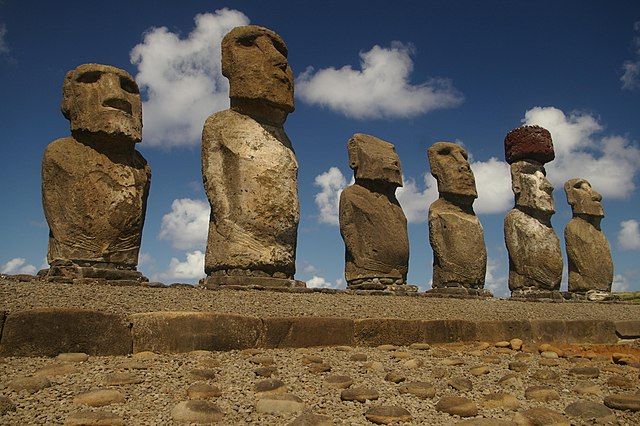
-

-

-
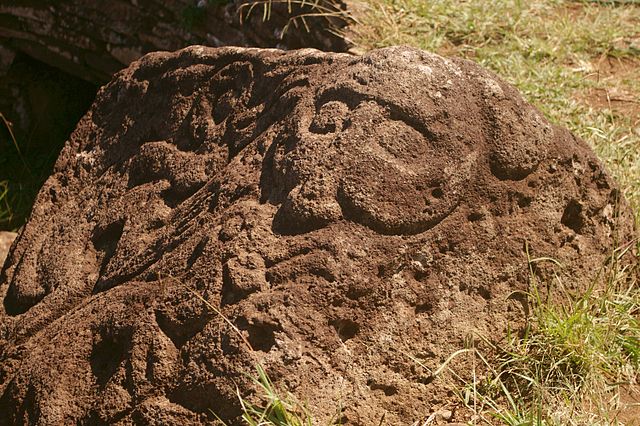
-

-

-

-
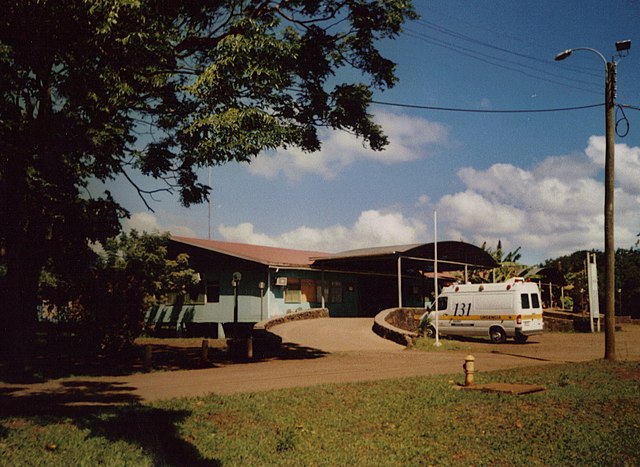
-

-

-
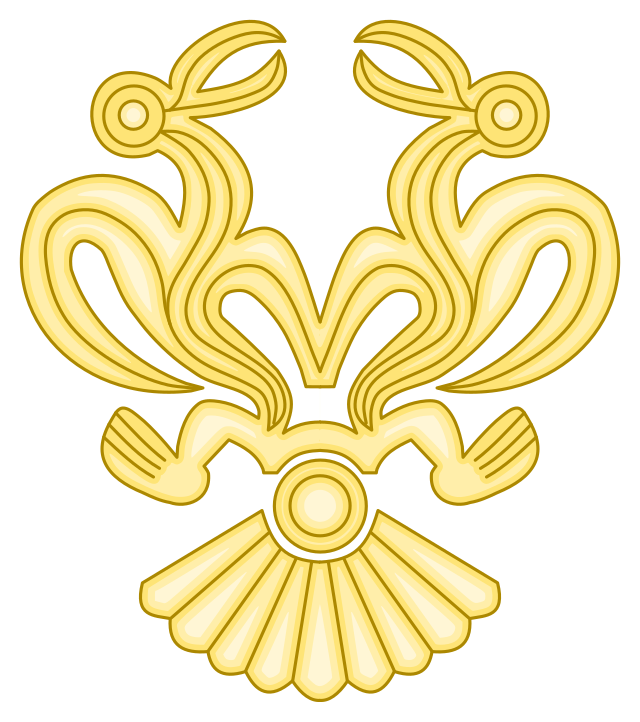
-

-
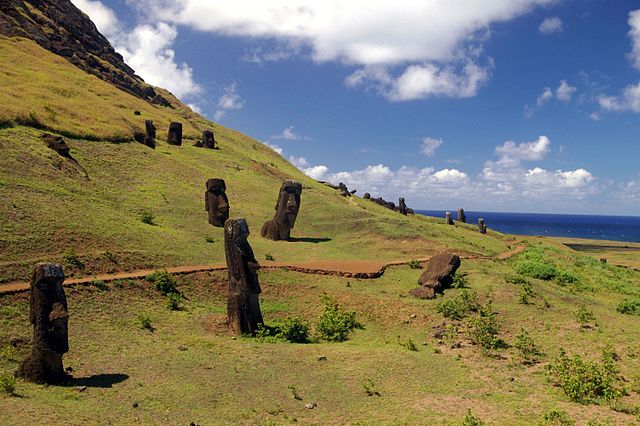
-
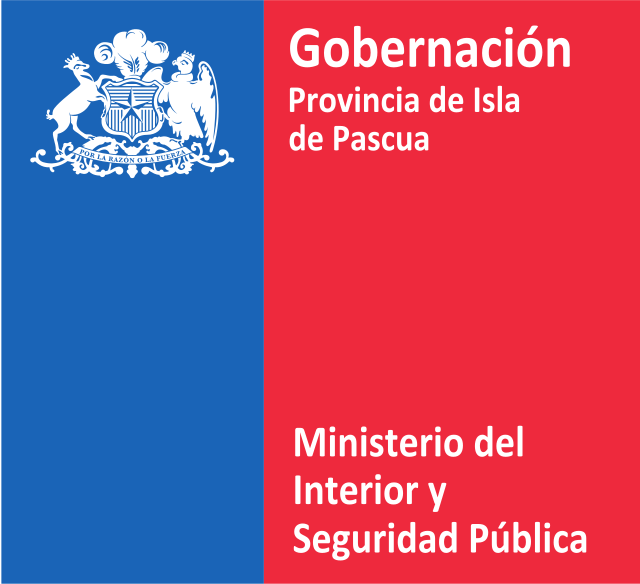
-
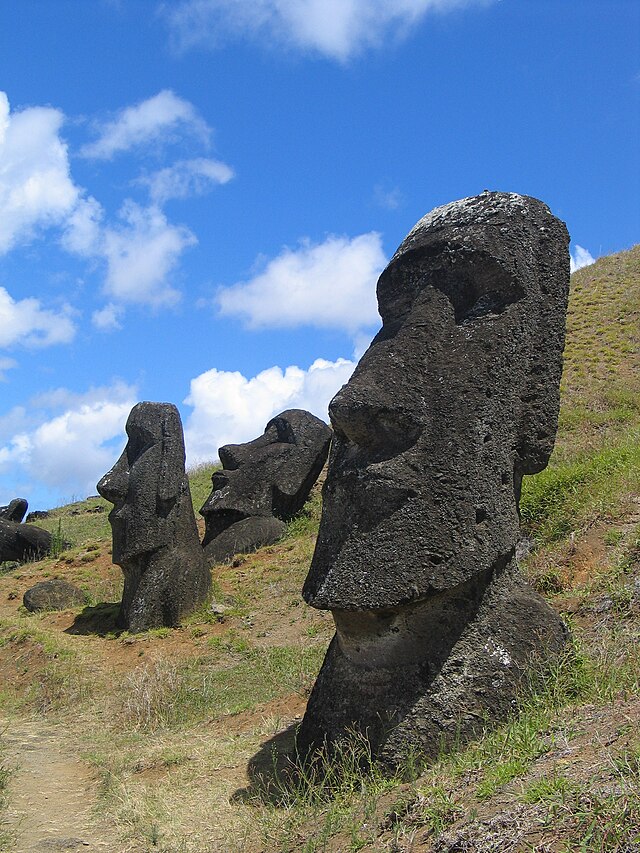
-
 A View of the Monuments of Easter Island, Rapanui, c. 1775–1776 by William Hodges.[27]
A View of the Monuments of Easter Island, Rapanui, c. 1775–1776 by William Hodges.[27]
-
Motu Nui islet, part of the Birdman Cult ceremony
-
 Jacob Roggeveen analyzing a Moai statue, 18th-century engraving.
Jacob Roggeveen analyzing a Moai statue, 18th-century engraving.
-
 "Queen Mother" Koreto with her daughters "Queen" Caroline and Harriette in 1877
"Queen Mother" Koreto with her daughters "Queen" Caroline and Harriette in 1877
-
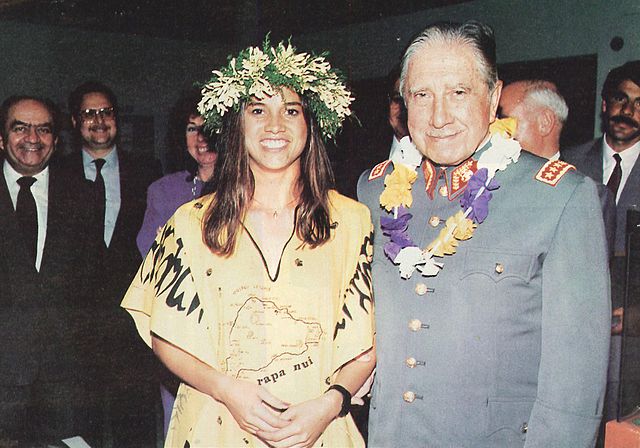 General Pinochet posing with a young Rapa Nui woman
General Pinochet posing with a young Rapa Nui woman
-
Manu Piri symbolizes love and union between two people. The slogan of the current administration is "Rapa Nui hai mahatu", or s "Rapa Nui with love".
-
 Souvenir Moai from Rapa Nui, bought at the Artisan's Market, 2020
Souvenir Moai from Rapa Nui, bought at the Artisan's Market, 2020
-
 Easter Island, Isla Salas y Gómez, South America and the islands in between
Easter Island, Isla Salas y Gómez, South America and the islands in between
-
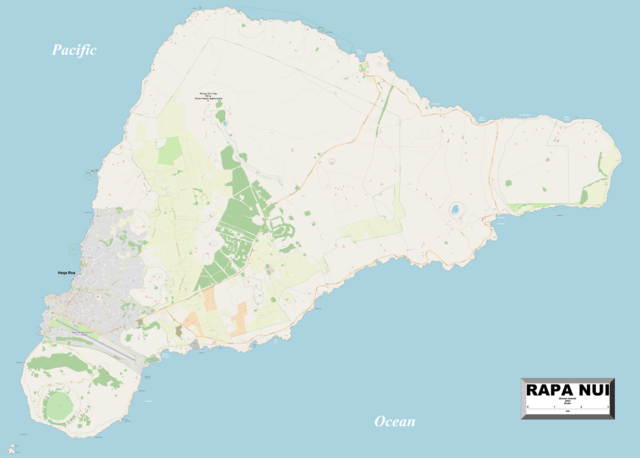 Detailed map of Rapa Nui/Easter Island
Detailed map of Rapa Nui/Easter Island
-
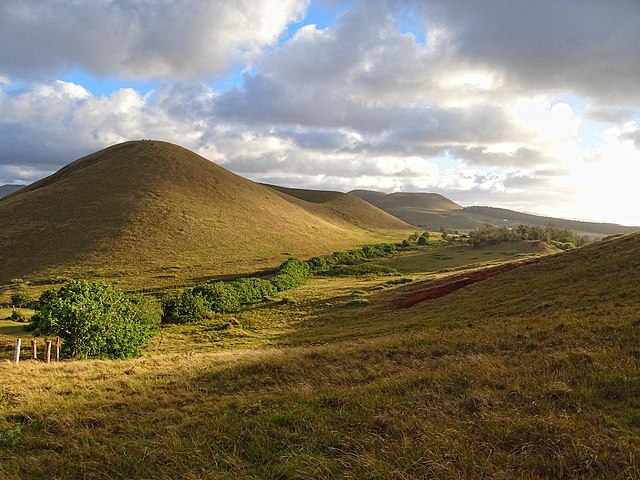 Typical landscape on Easter Island; rounded extinct volcanoes covered in low vegetation.
Typical landscape on Easter Island; rounded extinct volcanoes covered in low vegetation.
-

-
-
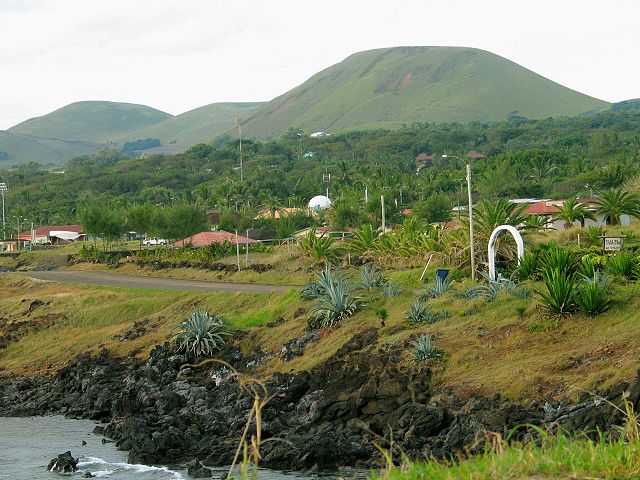
-

-
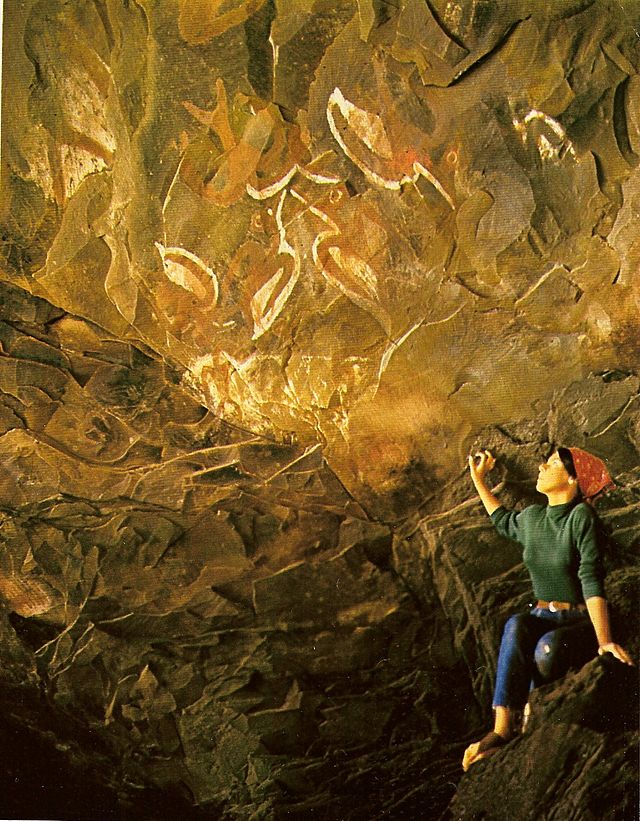 Bird paintings in the cave called "Cave of the Men Eaters"
Bird paintings in the cave called "Cave of the Men Eaters"
-

-
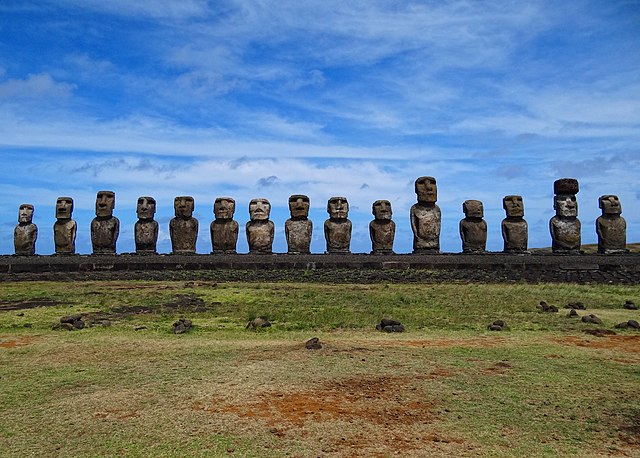
-
-
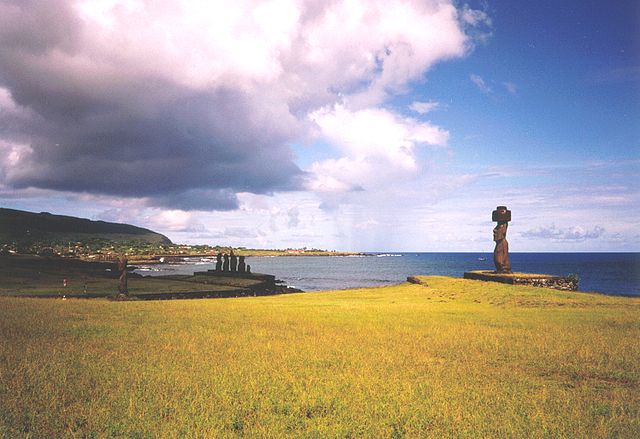 Two ahu at Hanga Roa. In foreground Ahu Ko Te Riku (with a pukao on its head). In the mid-ground is a side view of an ahu with five moai showing retaining wall, platform, ramp and pavement. The Mataveri end of Hanga Roa is visible in the background with Rano Kau rising above it.
Two ahu at Hanga Roa. In foreground Ahu Ko Te Riku (with a pukao on its head). In the mid-ground is a side view of an ahu with five moai showing retaining wall, platform, ramp and pavement. The Mataveri end of Hanga Roa is visible in the background with Rano Kau rising above it.
-
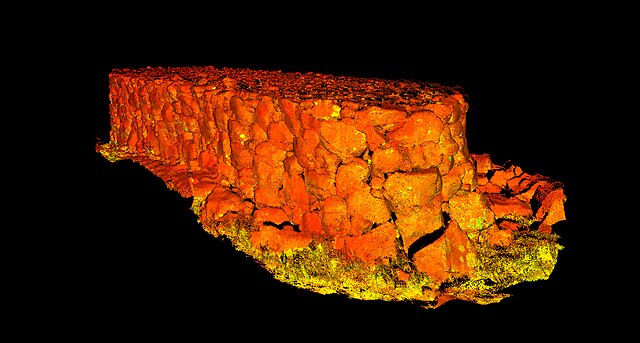 A Hare Moa, a Chicken House, image cut from a laser scan collected by nonprofit CyArk.
A Hare Moa, a Chicken House, image cut from a laser scan collected by nonprofit CyArk.
-
-
 Sample of rongorongo
Sample of rongorongo
-
-
-
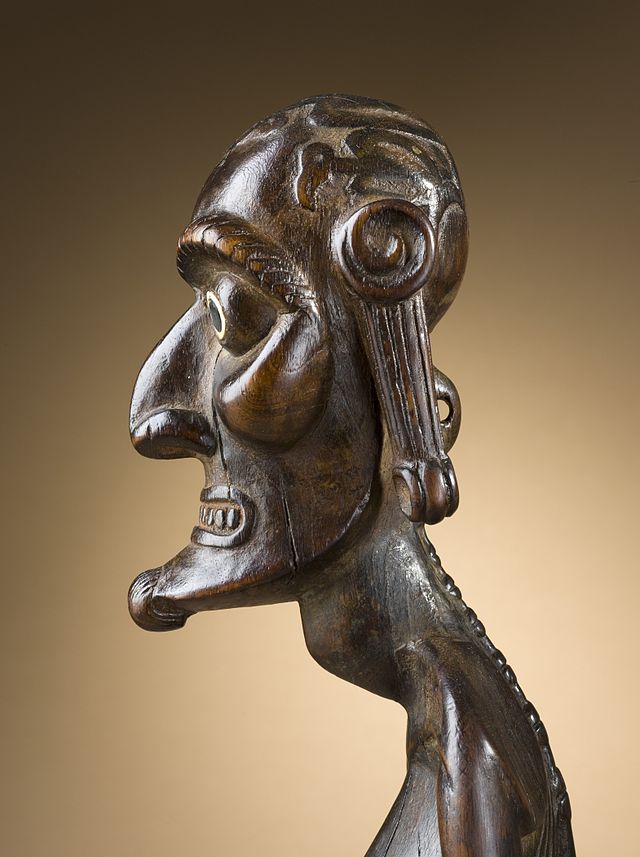 Ancestor figure, circa 1830, from LACMA collections
Ancestor figure, circa 1830, from LACMA collections
-
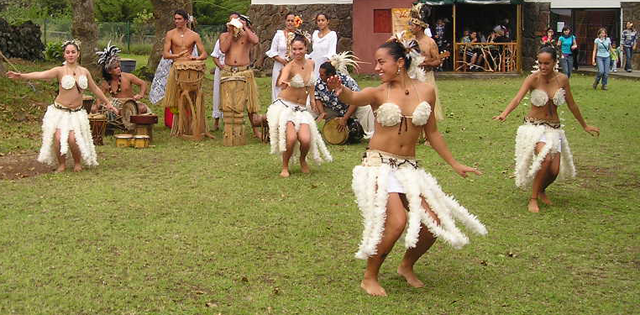
-
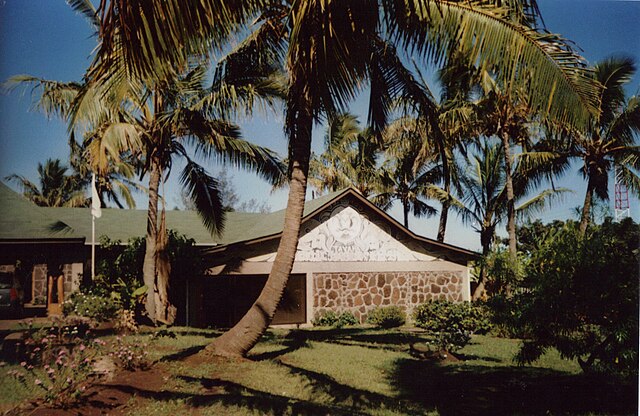
-
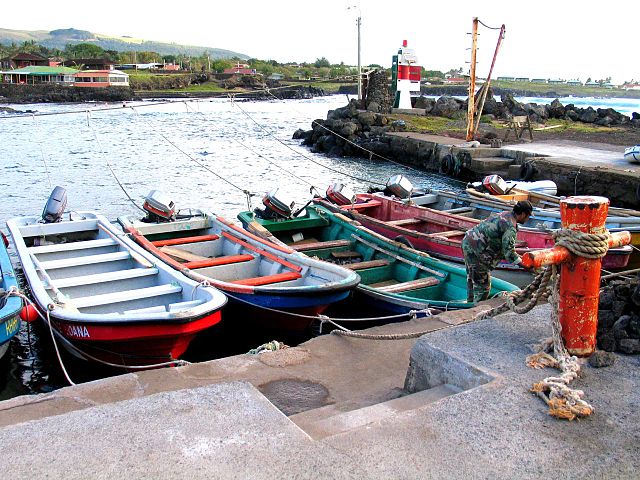
-
-
-
-

-
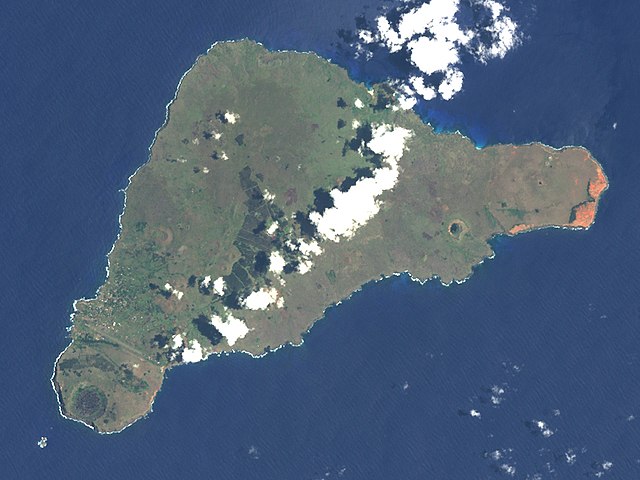
-
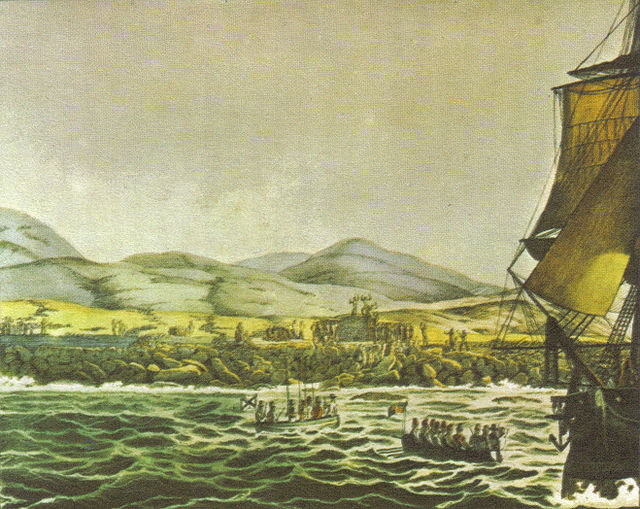
-

-

-
-

-

-
-
-

-
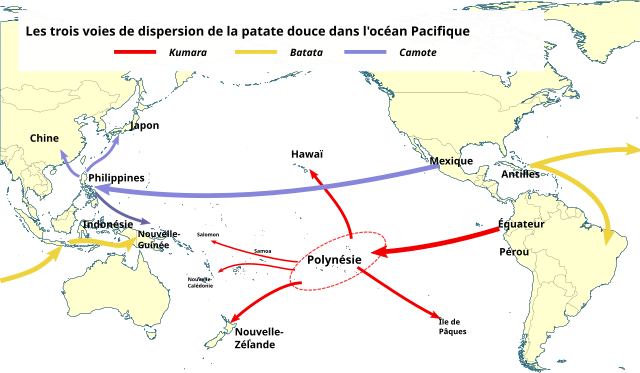
-

-
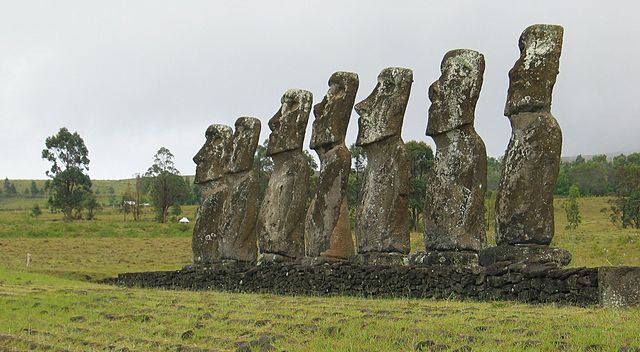
-

-

-
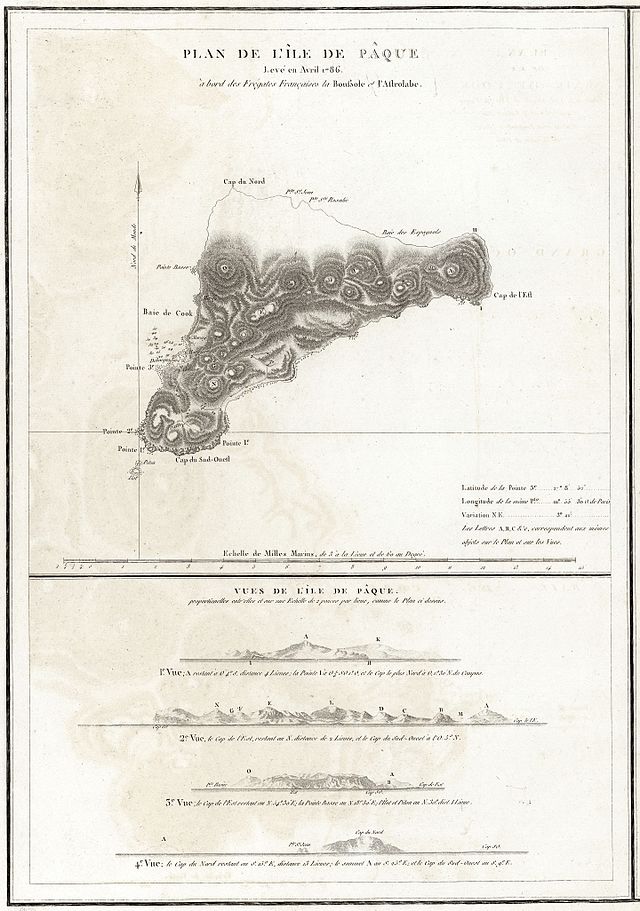
-

-

-
-

-

-
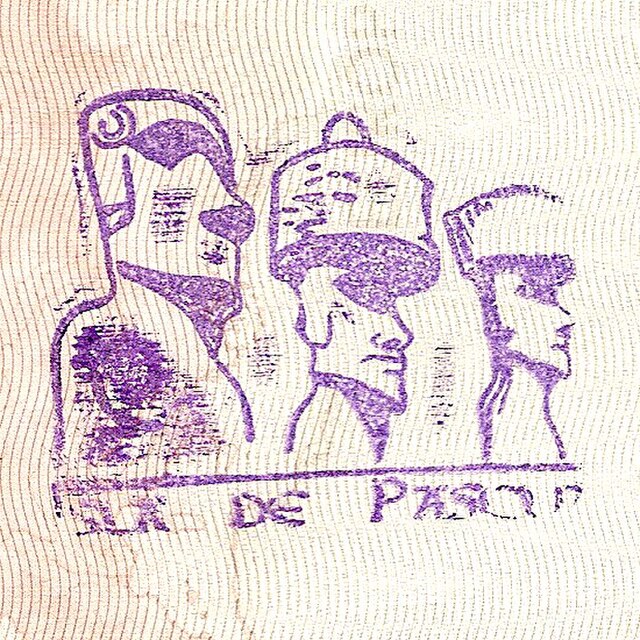
-

-
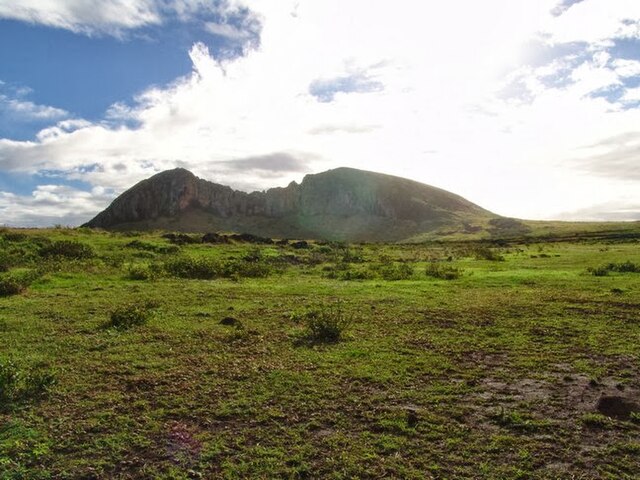
-

-

-
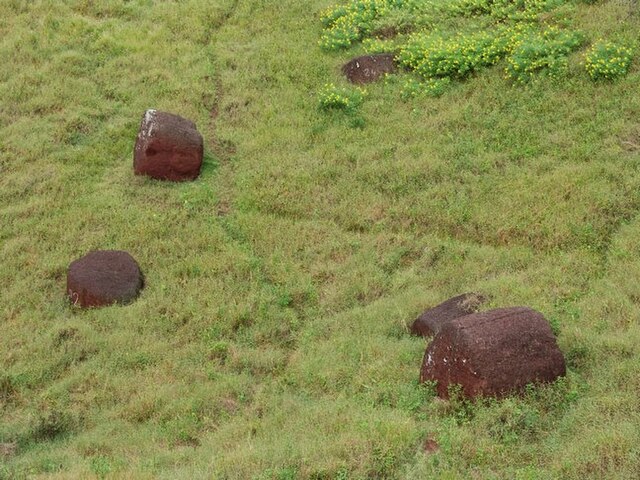
-
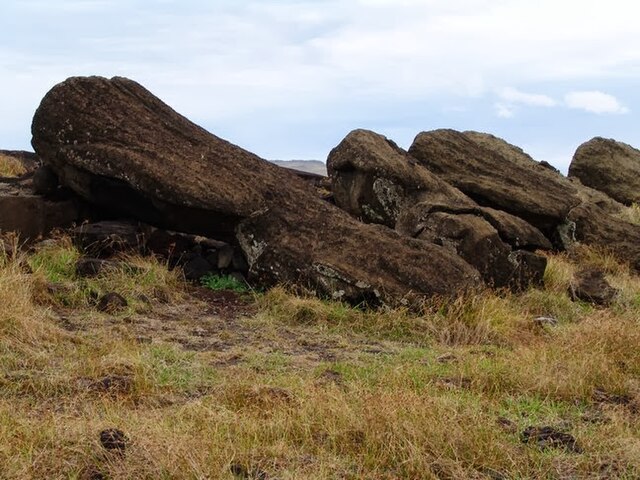
-

-

-

-
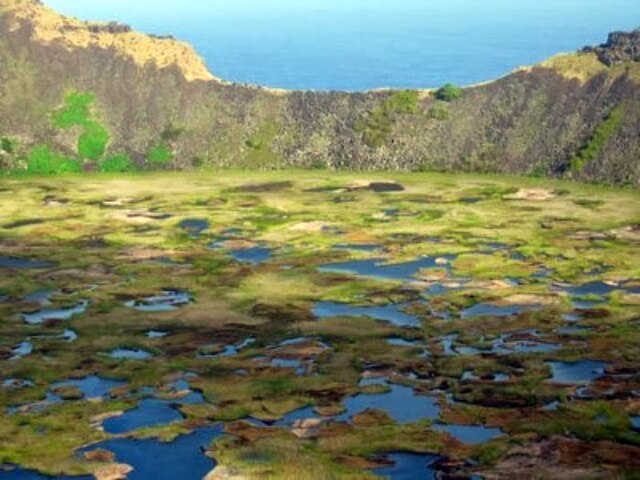
-

-

-

-
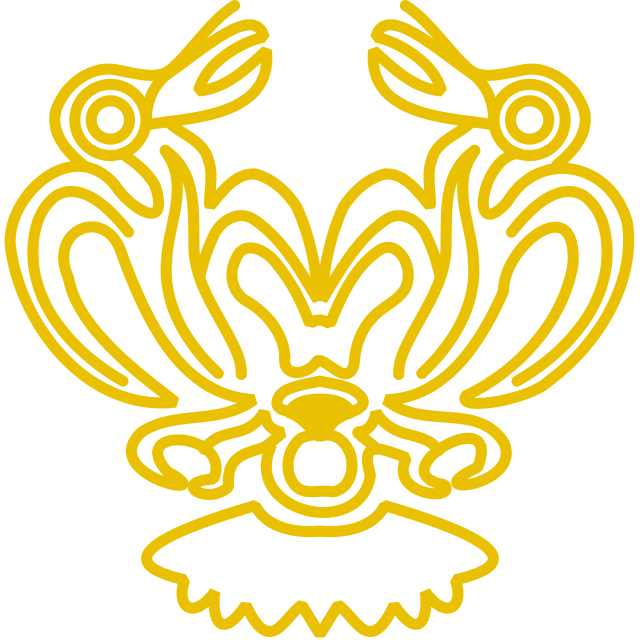
-
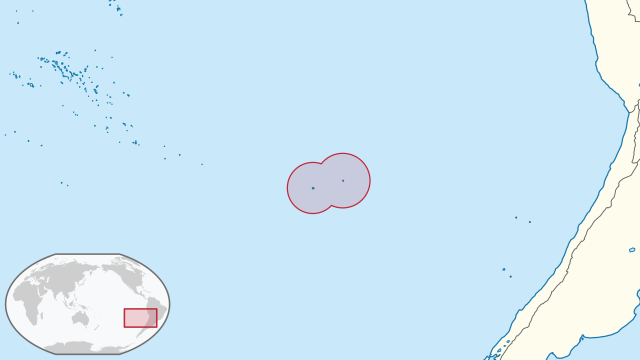
-

-

-

-
-

-
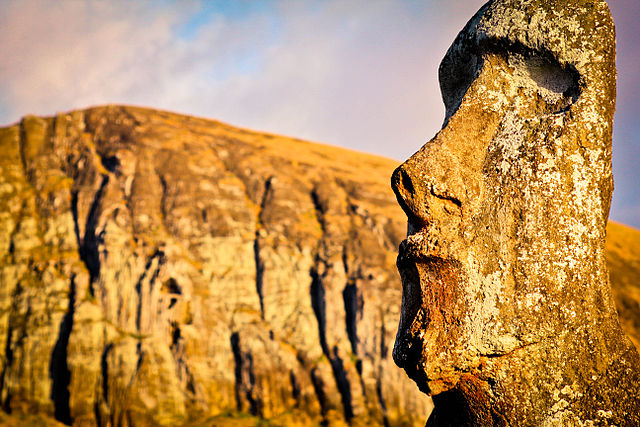
-
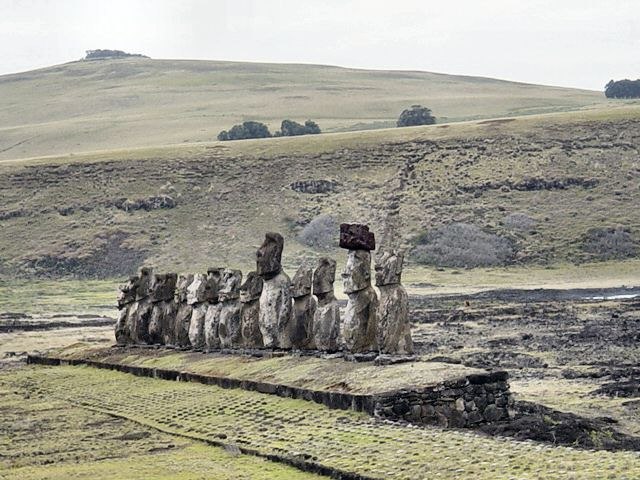
-
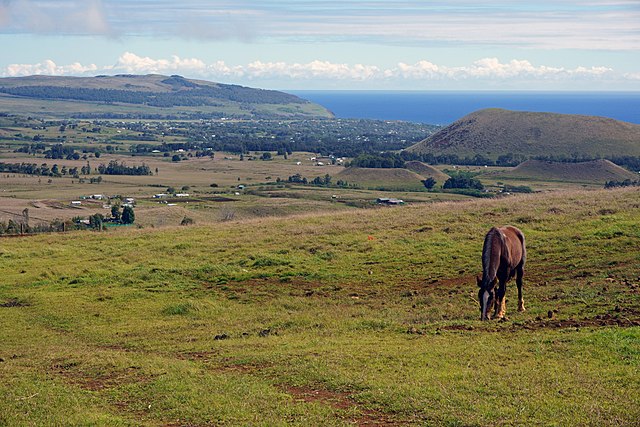
-

-

-
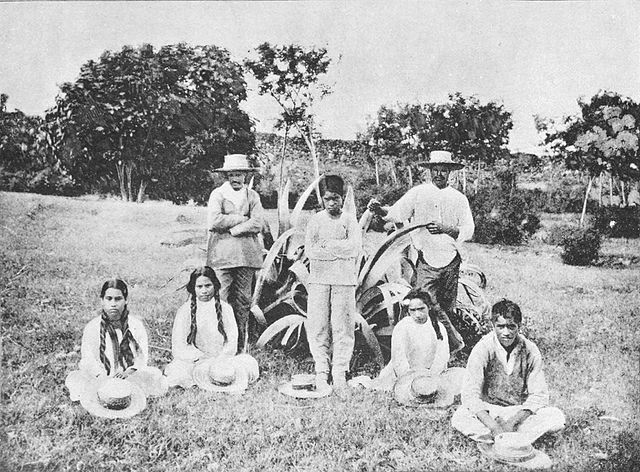
-

-

-
-
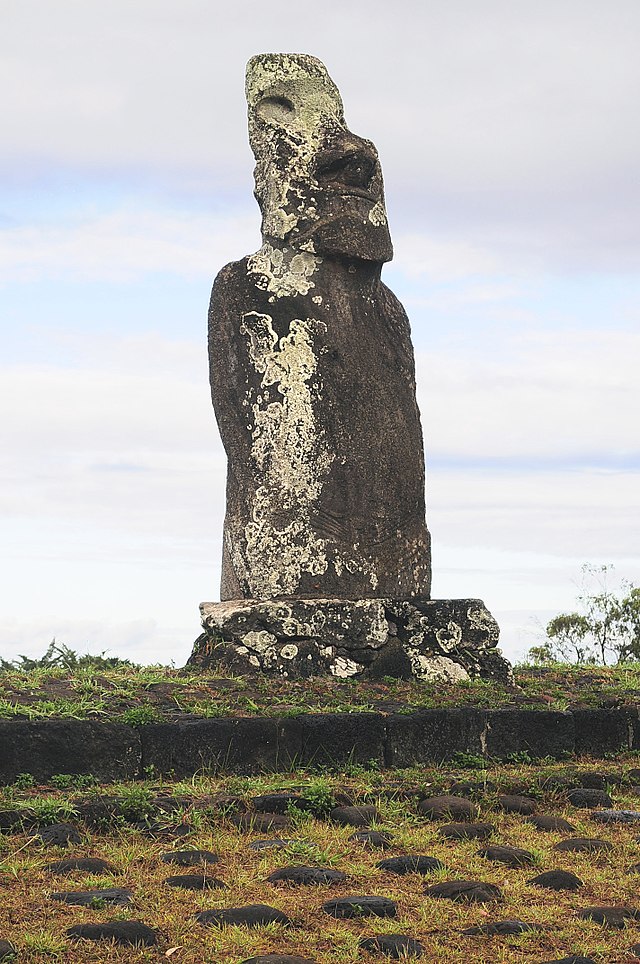
-
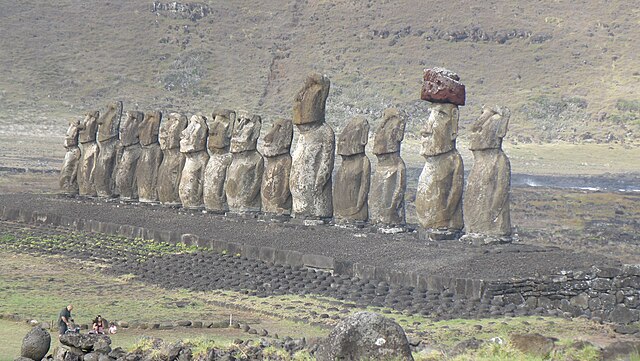
-

-

-
Comments
Share your experience with others and write the first comment about the location






































